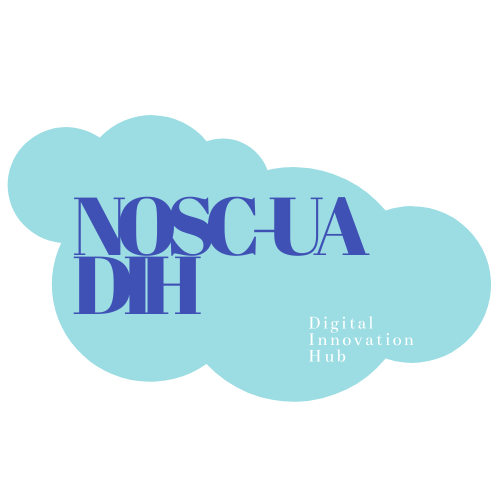In the context of the project of creating a digital innovation center / hub (DIH – Digital Innovation Hub) of the NAS of Ukraine will explore the available conditions for the provision of digital services on the basis of a cloud cluster of the Ukrainian National Grid.
The Virtual Center for Digital Innovation (NOSC-UA DIH) model is based on the service approaches of the EOSC DIH and the European EDIH model.
Partners of the project: ISOLUTIONS LLC Ukraine, FACULTY OF COMPUTER SCIENCES of National University of Kyiv-Mohyla Academy, Agency of European innovations
In the context of the project the preparation work for the development of digital innovation services both for scientists of the National Academy of Sciences of Ukraine and for the business sector and public authorities will be carried out. There will be work towards their integration into the European Digital Innovation Hub (EDIH) network, which is currently being formed under the new Digital Europe program. Among the basic services to be considered in the first stage are cloud services in high performance computing, machine learning and bioinformatics. It will also consider possible applications of such new technologies as artificial intelligence, VR / AR, blockchain and business-oriented systems (CRM, ERP, project management, etc.) systems.
The project is carried out within the Targeted Research Program of the National Academy of Sciences of Ukraine “Mathematical Modeling in Interdisciplinary Research of Processes and Systems Based on Intelligent Supercomputer, Grid and Cloud Technologies” for 2021-2025.
EOSC DIH
EOSC DIH is an international and multi-partner cooperation that supports companies in easily accessing the digital technologies and services offered by the EOSC. It combines 4 main pillars to help companies become more competitive: Pilot design and co-design, Technical access, Training & support and Visibility.
EOSC
EOSC is the European Open Science Cloud, a supporting environment to accelerate the transition to more effective Open Science and Open Innovation in a Digital Single Market by removing the technical, legislative and human barriers to the re-use of research data and tools, and by supporting access to services, systems and the flow of data across disciplinary, social and geographical borders.
